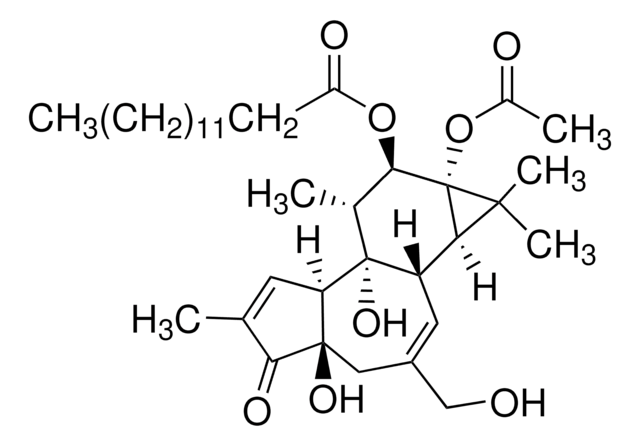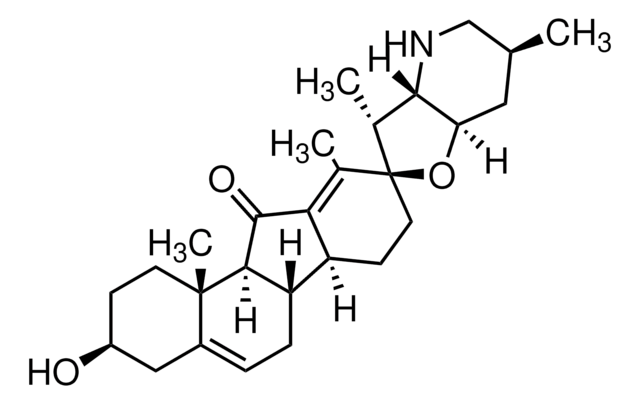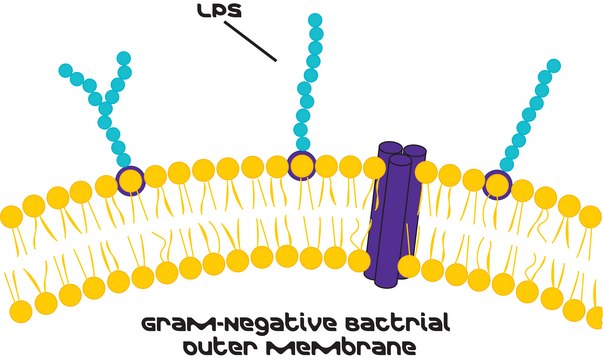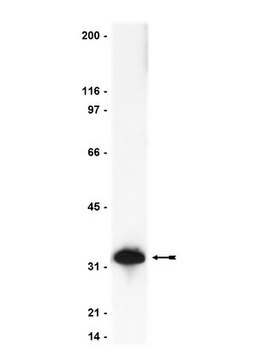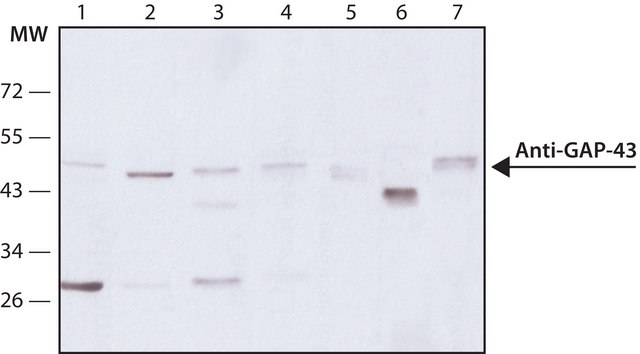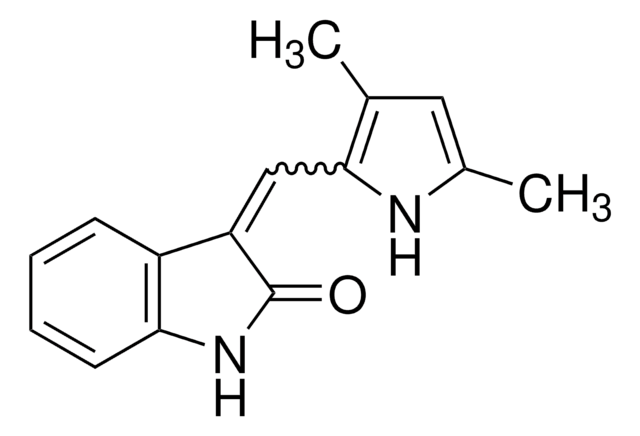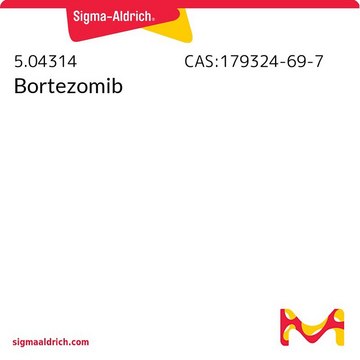推荐产品
生物来源
mouse
重组
expressed in E. coli
方案
≥98% (HPLC)
≥98% (SDS-PAGE)
表单
lyophilized
分子量
~7.8 kDa
包装
pkg of 20 μg
杂质
endotoxin, tested
NCBI登记号
运输
wet ice
储存温度
−20°C
基因信息
mouse ... Cxcl2(20310)
一般描述
MIP-2 (microphage inflammatory protein-2), or Cxcl2 ((C-X-C motif) ligand 2), was initially recognized as a 6kDa protein released by an LPS (lipopolysaccharide)-stimulated mouse macrophage cell line. It belongs to the chemokine family which contains 6-14kDa, heparin-binding cytokines. It is a member of the a (CXC) chemokine family, where any amino acid separates both conserved cysteines.
Mouse MIP-2 is a 7.8kDa protein containing 73 amino acid residues including the ‘RLR′ motif common to the CXC chemokine family that bind to CXCR1 or CXCR2.
Mouse MIP-2 is a 7.8kDa protein containing 73 amino acid residues including the ‘RLR′ motif common to the CXC chemokine family that bind to CXCR1 or CXCR2.
生化/生理作用
MIP-2 (microphage inflammatory protein-2), or Cxcl2 ((C-X-C motif) ligand 2), is a functional homolog of human IL-8 (interleukin) in mice, and like human IL-8 it induces a potent neutrophil chemotactic activity. It might be critical in the recruitment and influx of immune cells in inflammation and infection. Murine encephalomyelitis virus of Theiler (TMEV) induces the expression of MIP-2 in genetically susceptible but not in resistant mouse strains. In mice, in acute and chronic liver injury, TLR2 (Toll-like receptor)/S100A9/MIP-2 signaling pathways is crucial for neutrophil recruitment, and this might have therapeutic implications in selectively manipulating neutrophils in liver disease while circumventing normal wound healing and regenerative responses.
外形
Sterile filtered and then lyophilized without additives.
重悬
Centrifuge the vial prior to opening. Avoid freeze-thaw cycles.
Reconstitute in water to a concentration of 0.1-1 mg/mL. The solution can be diluted into other aqueous buffers.
法规信息
常规特殊物品
Theiler's virus induces the MIP-2 chemokine (CXCL2) in astrocytes from genetically susceptible but not from resistant mouse strains.
Rubio N et al
Cellular Immunology, 239(1), 31-40 (2006)
Stéphanie Val et al.
JAMA otolaryngology-- head & neck surgery, 141(11), 997-1005 (2015-10-30)
Chronic otitis media with effusion is characterized by middle ear secretion of mucin glycoproteins, predominantly MUC5B; MUC5AC, the other secretory mucin studied frequently, has also been identified in the middle ear. Emerging evidence suggests a dichotomous role for these mucins
Lin Qi et al.
Journal of cellular and molecular medicine, 25(10), 4551-4561 (2021-03-19)
Intriguingly, microRNAs (miRs) transferred as cargo in extracellular vesicles (EVs) can modulate wound healing through their regulation of fibroblast functions. In this study, we investigated the effects of miR-106b transfer via EVs derived from human umbilical vein endothelial cells (HUVECs)
A TLR2/S100A9/CXCL-2 signaling network is necessary for neutrophil recruitment in acute and chronic liver injury in the mouse.
Moles A et al
Journal of Hepatology, 60(4), 782-791 (2014)
Hassan O J Morad et al.
Scientific reports, 12(1), 11078-11078 (2022-07-01)
Immune cell chemotaxis to the sites of pathogen invasion is critical for fighting infection, but in life-threatening conditions such as sepsis and Covid-19, excess activation of the innate immune system is thought to cause a damaging invasion of immune cells
我们的科学家团队拥有各种研究领域经验,包括生命科学、材料科学、化学合成、色谱、分析及许多其他领域.
联系技术服务部门